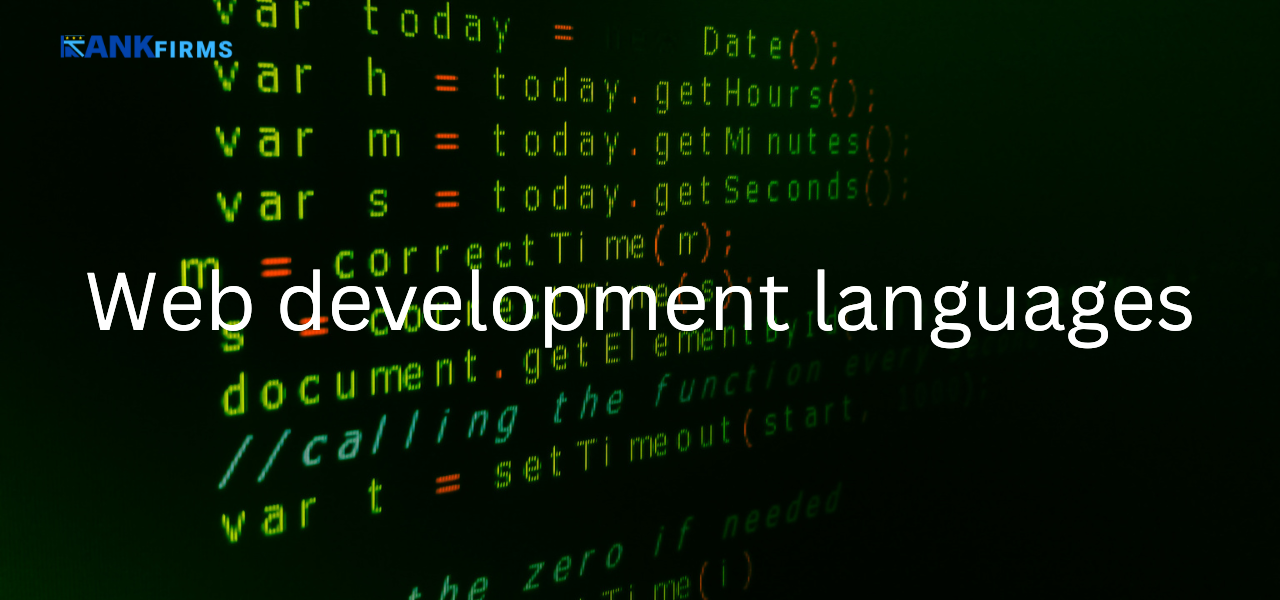We human beings, prefer new and better – be it clothes, shoes, phones, food, entertainment, and discovering places to spend vacation with friends or family. Since new gadgets are also a part of evolution, so are their features and functionalities. With the concept of generating and providing new to the public, new languages are developed too from the minds of geniuses.
New languages are also designed to overcome the shortcomings of existing languages while providing exciting features. For example, a new language may address performance bottlenecks, improve security, or simplify complex functionalities.
Intriguing minds often cater to new languages, offering features that make coding more efficient, readable, and maintainable. Syntax that is easier to learn and write, built-in features that reduce boilerplate code and strong developer communities can all contribute to a language’s adoption.
Sometimes, these minds with the help of software development companies developed entirely new programming paradigms, leading to the development of languages that support them. For instance, the rise of functional programming led to the creation of languages like Haskell, which guided towards a unique approach to solving problems compared to traditional imperative languages.

If you are still confused about what new languages are capable of, look at these statistics below:
- As per a Statista survey conducted in 2022, JavaScript (JS) remains the most widely used programming language among developers globally, with over 63.6% of respondents reporting its use. HTML/CSS followed closely behind at around 53%.
- Rust is the most admired language, more than 80% of developers that use it want to use it again next year. Compare this to the least admired language: MATLAB. Less than 20% of developers who used this language want to use it again next year. (Source: Stackoverflow)
- Phoenix is the most admired web framework and technology; more developers would choose to work with Phoenix again than those who have used the three most common: React, Node.js, and Next.js. (Source: Stackoverflow)
- A few technologies moved up a spot this year (Bash/Shell, C, Ruby, Perl, and Erlang) with two moving up two spots (Elixir and Lisp). The big mover, gaining seven spots since 2022 was Lua, an embeddable scripting language. (Source: Stackoverflow)
- Compared to Professional Developers, those learning to code are more likely to report using Java (37% vs 31%), C++ (32% vs 20%), and C (32% vs 17%). (Source: Stackoverflow)
- This year, PostgreSQL took over the first place spot from MySQL. Professional Developers are more likely than those learning to code to use PostgreSQL (50%) and those learning are more likely to use MySQL (54%). (Source: Stackoverflow)
- Next.js moved from 11th place in 2022 to 6th this year, likely driven by its popularity with those learning to code. (Source: Stackoverflow)
- Visual Studio Code remains the preferred IDE among all developers, increasing its use among those learning to code compared to professional developers (78% vs. 74%). (Source: Stackoverflow)
- .NET(5+) is the most popular in its category this year, while Tauri and Hugging Face Transformers are much less well-known but have more admiration among their users. (Source: Stackoverflow)
These stats explain how different languages have gained popularity over time, making designing/development better & easier. Further, we have a few languages, which are listed below as per their development purposes.
Categorizing Web Development Technologies
We all know how vast the programming language ecosystem has become, with each category catering to specific needs and purposes. Let’s understand these categories one by one and explore their unique characteristics with their use cases:
Procedural Programming Languages (PPP):
Focused On:
These languages focus on breaking down problems into step-by-step procedures, with an emphasis on the sequence of instructions.
Use Cases:
PPPs are well-suited for tasks that have clear logic flow, for instance, simple calculations, automating repetitive processes, or introductory programming courses.
Examples:
C, Fortran, COBOL
Object-Oriented Programming (OOP) Languages:
Focused On:
OOP languages revolve around objects, which encapsulate data (attributes) and the code to manipulate that data (methods). Objects in these languages interact with each other to achieve program functionality.
Use Cases:
OOP is ideal for building complex applications with modularity and reusability in mind. Common use cases include enterprise software development, game development, and user interface (UI) development.
Examples:
Java, Python, C++, C#
Functional Programming Languages:
Focused On:
Functional languages emphasize functions (blocks of code that perform specific tasks) and immutability (data doesn’t change state after creation). Programs are built by composing functions, which means the focus will be entirely on what the program does rather than how it does it.
Use Cases:
Functional languages are often used for data analysis, machine learning, and building highly concurrent applications.
Examples:
Haskell, Scala, Lisp
Also Read: The Backbone of Web Development: Essential Back-End Technologies
Scripting Languages:
Focused On:
These are lightweight languages designed for rapid development and automation tasks. They are often interpreted line by line which makes them easier to learn and use.
Use Cases:
Scripting languages are commonly used for web development (e.g., JavaScript for client-side scripting), system administration (e.g., Bash scripting for automating tasks), and extending the functionality of existing applications.
Examples:
Python, JavaScript, Ruby, PHP
Markup Languages:
Focused On:
These languages define the structure and presentation of content, often used to create web pages. They are meant to define the layout and formatting of information on web pages.
Use Cases:
Markup languages are essential for building web pages. HTML defines the content structure, CSS styles the presentation, and XML is used for data exchange.
Examples:
HTML, CSS, XML
Domain-Specific Languages (DSLs):
Focused On:
These are custom languages designed for a specific domain or purpose. They offer a concise and specialized way to express tasks within that domain.
Use Cases:
DSLs are used in various fields, such as defining financial models (e.g., Lindt), building automation rules (e.g., Blockly), or querying databases (e.g., SQL).
Compiled Languages:
Focused On:
Compiled languages are not directly used, they are translated into machine code (language understood by computer) before execution. This translation typically happens offline with the help of a compiler program.
Use Cases:
Compiled languages offer high performance and efficiency, making them suitable for system programming, game development, and performance-critical applications.
Examples: C, C++, Java
Interpreted Languages:
Focused On:
Interpreted languages are executed line by line by an interpreter program at runtime. The interpreter translates each line into machine code just before it’s needed.
Use Cases:
Interpreted languages are generally faster to develop due to their simpler syntax and ease of debugging. They are commonly used for web development (e.g., Python), scripting, and rapid prototyping.
Examples:
Python, JavaScript, PHP
Understanding these categories empowers you to choose the right programming language for your specific needs. Consider factors like the type of website you’re building, your desired level of performance, and your personal coding preferences when making your selection.
Further, we have a list of technologies that are widely used by website development companies. This list is exclusively prepared for budding developers who want to learn website and mobile application development.
Type of Website Development Technology

TypeScript
TypeScript is a superset of JavaScript developed by Microsoft, adding static typing to enhance code quality and maintainability. It compiles plain JavaScript, making it compatible with all JavaScript environments, and is widely used in large-scale applications and frameworks like Angular.
Perl
Perl is a high-level scripting language known for its strong text manipulation capabilities and use in system administration, web development, and network programming. It played a significant role in early web development through CGI scripts and remains useful for various scripting tasks.
Ruby
Ruby is a high-level scripting language designed for simplicity and productivity, with an emphasis on readable syntax. It is best known for the Ruby on Rails framework, which simplifies web development through convention over configuration, making it popular for building web applications.
React
React is a JavaScript library developed by Facebook for building user interfaces, particularly single-page applications. It enables developers and react development companies to create reusable UI components and efficiently manage the application state using a virtual DOM for enhanced performance.
Kotlin
Kotlin is a statically typed language fully interoperable with Java, developed by JetBrains. It offers concise syntax and modern features, making it popular for Android development and backend web services. Kotlin’s safety features, like null safety, help reduce common programming errors.
Angular
Angular is a web application framework developed by Google, using TypeScript. It provides tools and libraries for building dynamic single-page applications with a modular architecture, making it suitable for large-scale, enterprise-level applications.
Python
Python is a high-level, interpreted language known for its simplicity and versatility. It’s widely used in web development (Django, Flask), data science, machine learning, and automation. Thanks to its readable syntax and extensive standard library, python development companies and developers have the leverage to develop complex yet scalable websites.
Objective-C
Objective-C is an object-oriented programming language primarily used for macOS and iOS applications before the adoption of Swift. It extends C with Smalltalk-style messaging and remains important for maintaining legacy Apple software.
R
R is a language and environment for statistical computing and graphics, widely used for data analysis and visualization in academia and industry. It provides a variety of statistical and graphical techniques and is highly extensible through packages.
Swift
Swift is a general-purpose, compiled language developed by Apple for iOS and macOS applications. It offers modern syntax, safety features, and performance optimizations, designed to replace Objective-C for Apple development.
JavaScript
JavaScript is a high-level, interpreted scripting language essential for web development. The most preferred language among Java development companies, JavaScript provides dynamic and interactive content for websites. It is also used on the server side with Node.js, making it a versatile language for full-stack development.
Scala
Scala is a statically typed language that combines object-oriented and functional programming concepts, running on the Java Virtual Machine (JVM). It is popular in big data processing, particularly with Apache Spark, due to its concise and scalable code.
MATLAB
MATLAB is a high-level programming environment used for numerical computing and data visualization. It is widely employed in engineering, scientific research, and academia for tasks involving matrix manipulations, algorithm development, and simulations.
.NET
.NET is a software framework developed by Microsoft for building and running applications on Windows. It supports multiple languages, including C#, and is commonly used for web development with ASP.NET, enterprise applications, and services.
Java
Java is a high-level, object-oriented language known for its portability across platforms. Widely used for enterprise applications, Android development, and large-scale web applications, Java’s “write once, run anywhere” philosophy makes it highly versatile.
Golang (Go)
Golang, or Go, is a statically typed, compiled language developed by Google. It is designed for simplicity, efficiency, and concurrency, making it ideal for high-performance web servers, distributed systems, and cloud services.
NoSQL
NoSQL refers to a variety of database technologies designed for scalable, schema-less data storage. Unlike traditional relational databases, NoSQL databases excel in handling large volumes of unstructured or semi-structured data, making them suitable for big data and real-time web applications.
PHP
PHP is a server-side scripting language designed for web development, embedded in HTML. PHP development companies use this language for creating dynamic web pages and power many content management systems like WordPress, known for its ease of use and extensive ecosystem.
CSS3
CSS3 is the latest version of the Cascading Style Sheets language, used to style and layout web pages. It introduces new features like animations, transitions, and flexible box layouts, enabling more dynamic and responsive web designs.
C#
C# is a statically typed, object-oriented language developed by Microsoft for the .NET framework. It is used for a wide range of applications, from web and desktop to game development with Unity, offering robust performance and a rich set of libraries.
C++
C++ is a high-performance, general-purpose language that extends C with object-oriented features. It is widely used in system/software development, game development, and applications requiring real-time processing due to its efficiency and control over system resources.
HTML
HTML (HyperText Markup Language) is the standard language for creating web pages. It provides the structure of web content, which is styled with CSS and made interactive with JavaScript. HTML is fundamental to web development, forming the backbone of web pages.
SQL
SQL (Structured Query Language) is a standardised language for managing and manipulating relational databases. It allows for querying, updating, and managing data, and is essential for backend database operations in web applications and business intelligence.
Rust
Rust is a statically typed, compiled language focused on safety and performance. Developed by Mozilla, it ensures memory safety without a garbage collector, making it ideal for system programming, high-performance applications, and concurrent systems.
Vue.js
Vue.js is a progressive JavaScript framework for building user interfaces and single-page applications. It is designed for ease of integration and flexibility, making it a popular choice for both small and large-scale web development projects.
Also Read: The Ultimate Guide to Front-End Technologies for Modern Web Development
Bash/Shell (all shells)
Bash and other shell scripting languages are used for command-line scripting and task automation. They are essential for system administration, DevOps, and automating repetitive tasks in Unix-like operating systems.
PowerShell
PowerShell is a task automation and configuration management framework developed by Microsoft. It combines a command-line shell with a scripting language, primarily used for automating administrative tasks and managing system configurations on Windows.
LUA
LUA is a lightweight, embeddable scripting language often used in game development and embedded systems. It is known for its simplicity and performance, making it a popular choice for scripting within larger applications.
Assembly
Assembly language is a low-level programming language that provides direct control over hardware. It is used for performance-critical applications, embedded systems, and situations where fine-grained control over the system is necessary.
Groovy
Groovy is an object-oriented scripting language for the Java platform. It enhances productivity with a concise syntax and integrates seamlessly with existing Java code. Groovy is often used in build automation with Gradle and for scripting in Java environments.
Elixir
Elixir is a functional, concurrent programming language built on the Erlang VM. It is designed for building scalable and maintainable applications, particularly those requiring real-time communication, such as web applications and distributed systems.
Haskell
Haskell is a purely functional programming language known for its strong static typing and lazy evaluation. It is used in academia and industry for high-assurance systems, complex algorithm implementation, and research in functional programming.
Delphi
Delphi is an object-oriented programming language and integrated development environment (IDE) for rapid application development. It is used for building desktop, mobile, and database applications, known for its ease of use and strong performance.
Lisp
Lisp is a family of functional programming languages known for its symbolic expression syntax and powerful macro system. It has been influential in artificial intelligence research, symbolic computations, and academic settings.
Solidity
Solidity is a contract-oriented programming language for writing smart contracts on the Ethereum blockchain. It is used for developing decentralized applications (DApps) and enabling blockchain-based transactions and automated contract execution.
Clojure
Clojure is a functional programming language that runs on the Java Virtual Machine (JVM). It emphasizes immutability and concurrency, making it suitable for data processing and real-time systems. Clojure’s simplicity and expressiveness appeal to many developers.
Julia
Julia is a high-level, high-performance programming language designed for numerical and scientific computing. It combines the ease of use of languages like Python with the speed of compiled languages, making it ideal for data science, machine learning, and scientific research.
Also Read: How to choose the right website development company?
Erlang
Erlang is a functional programming language designed for building concurrent, distributed, and fault-tolerant systems. It is widely used in telecommunications, messaging systems, and applications requiring high availability and reliability.
F#
F# is a functional-first programming language that runs on the .NET framework. It supports both functional and object-oriented programming paradigms and is used for data processing, financial modelling, and scientific computing.
Fortran
Fortran is a high-level programming language that excels in numerical and scientific computation. It has been widely used in engineering, scientific research, and high-performance computing for decades, known for its efficiency and extensive mathematical libraries.
Zig
Zig is a general-purpose, statically typed compiled programming language designed for robustness and optimality. It aims to be a modern alternative to C, offering manual memory management, safety features, and strong performance for system-level programming.
Ada
Ada is a statically typed, structured programming language used in real-time and safety-critical systems. It is known for its reliability and is widely used in aerospace, defence, and other industries requiring high-assurance software.
OCaml
OCaml is a functional programming language known for its performance and expressiveness. It combines functional, imperative, and object-oriented programming paradigms, and is used in academia, financial modeling, and systems programming.
Prolog
Prolog is a logic programming language used for solving problems involving complex relationships and rules. It is widely used in artificial intelligence, particularly for natural language processing, expert systems, and theorem proving.
Apex
Apex is a proprietary programming language developed by Salesforce for building custom business logic within the Salesforce platform. It is used for developing complex business processes and integrations in cloud-based customer relationship management (CRM) systems.
Cobol
COBOL (Common Business-Oriented Language) is a high-level programming language designed for business applications. It is known for its readability and has been widely used in banking, finance, and administrative systems for decades.
SAS
SAS (Statistical Analysis System) is a software suite used for advanced analytics, business intelligence, and data management. It is widely used in healthcare, finance, and other industries for statistical analysis and predictive modelling.
Crystal
Crystal is a statically typed, compiled language with syntax inspired by Ruby. It aims to combine the elegance and productivity of Ruby with the performance and efficiency of compiled languages like C, making it suitable for web and system applications.
Nim
Nim is a statically typed, compiled language designed for performance and ease of use. It combines the efficiency of C with modern features like metaprogramming and strong type safety, making it suitable for systems programming and application development.
APL
APL (A Programming Language) is an array programming language known for its concise syntax and powerful operations on multi-dimensional arrays. It is used in mathematical, scientific, and financial applications for data analysis and visualisation.
Flow
Flow is a static type checker for JavaScript developed by Facebook. It adds type annotations to JavaScript, helping developers catch errors early and improve code quality. Flow integrates seamlessly with existing JavaScript codebases.
Raku
Raku, formerly known as Perl 6, is a high-level, general-purpose programming language designed for multi-paradigm programming. It offers expressive syntax and features like gradual typing, making it suitable for scripting, data manipulation, and rapid application development.
In Conclusion:
Popularity vs. Demand:
While a language might be widely used (e.g., HTML/CSS for building web page structure), the demand for developers skilled in a specific language or IT services companies with expertise in web development technologies can vary depending on industry trends and project needs.
Front-End vs. Back-End Development:
Different languages are often used for front-end (user-facing) and back-end (server-side) development. JavaScript is dominant on the front end, while languages, like Python and Java are commonly used for back-end development.
Emerging Languages:
New languages are constantly being developed and some may gain popularity over time. It’s always good to stay updated on the latest trends in the web development landscape.
By exploring these resources and staying informed about current trends, you can get a well-rounded picture of the most popular and in-demand web development languages.








